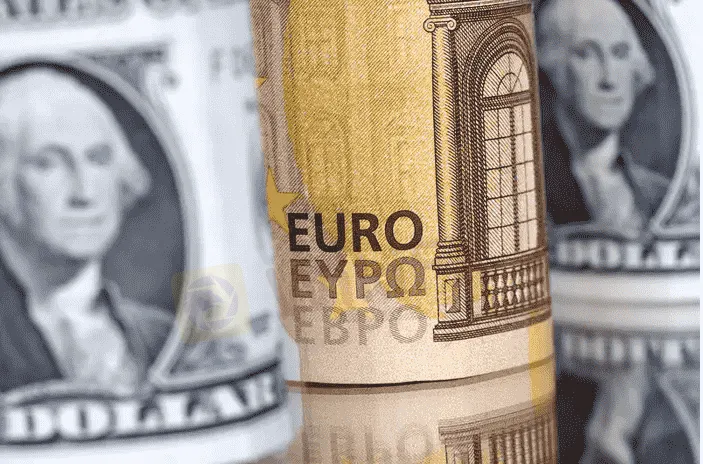简体中文
繁體中文
English
Pусский
日本語
ภาษาไทย
Tiếng Việt
Bahasa Indonesia
Español
हिन्दी
Filippiiniläinen
Français
Deutsch
Português
Türkçe
한국어
العربية
Dollar loses steam, euro on front foot as ECB meeting looms
Abstract:The U.S. dollar retreated further on Wednesday as the euro extended its overnight bounce on relief Europe might avoid the worst fears concerning energy shortages, and on the chance the European Central Bank may deliver a more aggressive rate hike.

Russian gas flows via the Nord Stream 1 pipeline are seen restarting on time on Thursday after the completion of scheduled maintenance, Reuters reported on Tuesday.
The euro tacked on 0.25% to $1.0245, having risen 0.75% the previous day, its strongest daily gain in a month.
Aiding sentiment was news that the ECB is considering raising interest rates by a larger-than-expected 50 basis points at their meeting on Thursday.
“If we do see Russian gas flows resume tomorrow, that will be good news for the euro/dollar and in the near term, euro can get a little boost and get away further from parity,” said Carol Kong, a currency strategist at Commonwealth Bank of Australia.
“But I am still worried about the euro/dollar, I think downsides still persist … the potential hawkish pivot from the ECB may not be able to give sustained support.”
The euro has lost about 2.3% since the beginning of July, and broke parity with the dollar for the first time in two decades last week following a red-hot U.S. inflation print and fears about a sharp economic downturn in the eurozone.
Other major currencies similarly rallied on the back of the weakening greenback, and as central banks around the world become more hawkish in their efforts to tame soaring inflation.
The U.S. dollar index measure against a basket of key currencies was down 0.14% to 106.52, well off its two-decade peak of 109.29 last week.
The U.S. currency‘s retreat has also coincided with reduced expectations of a supersized 100-basis-point rate hike at next week’s Federal Reserve policy review.
The Aussie was up 0.4% at $0.6925, after rising 1.3% overnight, also the largest in a month.
Ahead of the Feds meeting next week, markets are pricing in a 23.2% chance of a 100 bp rate hike., with expectations of the jumbo rate increase easing after policymakers were quick to pour cold water on it.
Minutes of the Reserve Bank of Australias (RBA) July policy meeting out the day earlier showed that the central bank sees a need for more policy tightening to curb inflation.
Earlier on Wednesday, RBA Governor Philip Lowe also suggested that rates could at least double from current low levels.
Sterling likewise advanced 0.28% to $1.2031.
Bank of England Governor Andrew Bailey said on Tuesday that a 50-basis-point rate hike will be “among the choices on the table” at the BoEs next meeting.
Conversely, the Japanese yen remained an outlier on Wednesday morning, and last traded 138.155 per dollar, as the Bank of Japan seems determined to stand by its dovish stance.
“Sticking to its dovish guns will entail sharpening policy trade-offs for the BOJ. The most pressing of which, is the sharp drop in the JPY; which has fallen a gut-wrenching 20-21% since the September FOMC,” said Vishnu Varathan, head of economics and strategy at Mizuho Bank in Singapore.
Over in the cryptoverse, Bitcoin was steady at $23,300, just off a five-week high hit the day before.

Disclaimer:
The views in this article only represent the author's personal views, and do not constitute investment advice on this platform. This platform does not guarantee the accuracy, completeness and timeliness of the information in the article, and will not be liable for any loss caused by the use of or reliance on the information in the article.
Read more

Unleash Your Trading Skills: Join the WikiFX KOL India Trading Competition!
Are you ready to take your trading expertise to the next level? WikiFX is excited to announce an extraordinary India Trading Competition designed to connect passionate forex traders, enhance user engagement, and reward trading excellence!

WikiEXPO Dubai on-site videos are here!
Let’s experience the excitement through the video!

WikiEXPO Dubai on-site videos are here!
WikiEXPO Dubai on-site videos are here!

WikiEXPO Dubai 2024
Come and experience it with us!
WikiFX Broker
Latest News
Elon Musk Warns of Imminent US Bankruptcy | Bitcoin Retreats from $100K
WikiEXPO Global Expert Interview: Advanced Practices and Insights in Financial Regulation
Justin Sun Invests $30M in Trump-Backed World Liberty Financial
Robinhood Launches Ethereum Staking with 100% Rewards Match
Kraken Closes NFT Marketplace Amid New Product Focus
Philippine Banks Launch PHPX Stablecoin to Transform Payments
Broker Review: Is FOREX.com a solid Broker?
Tether to Discontinue EURt Stablecoin Amid Regulatory Shifts in Europe
Adani’s Bribery Scandal! SEC Charges, Major Fallout & Adani’s Stand
Unleash Your Trading Skills: Join the WikiFX KOL India Trading Competition!
Currency Calculator


